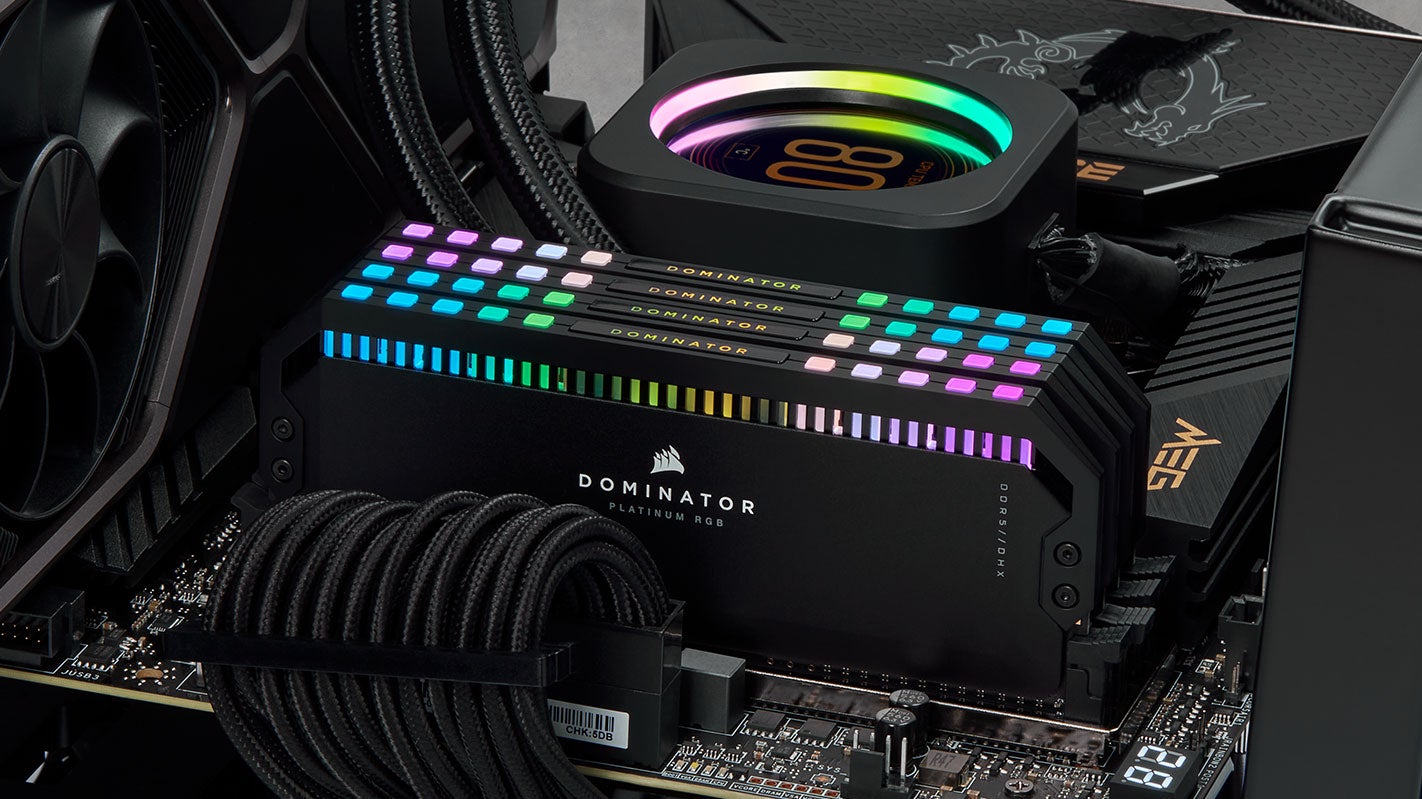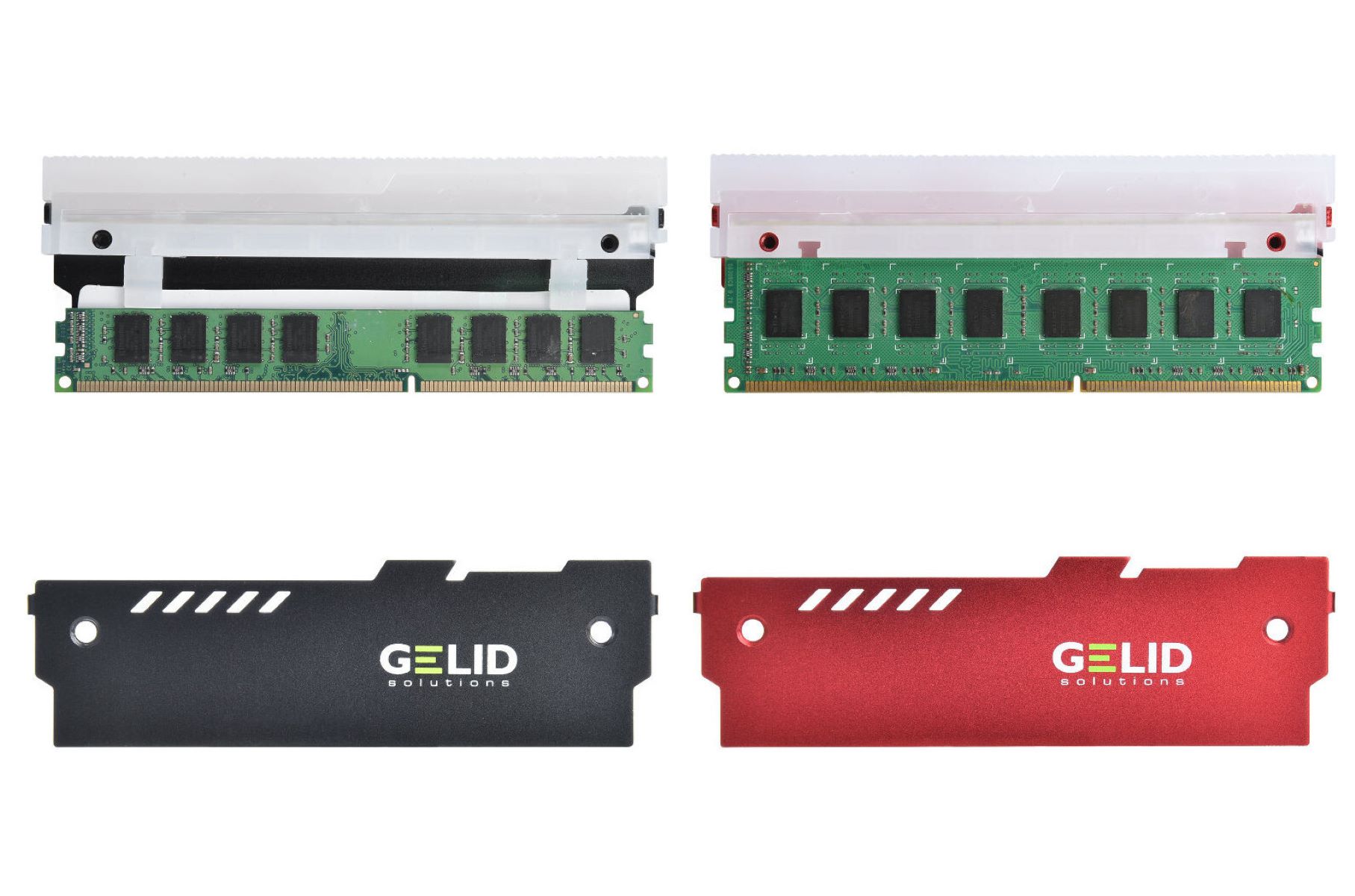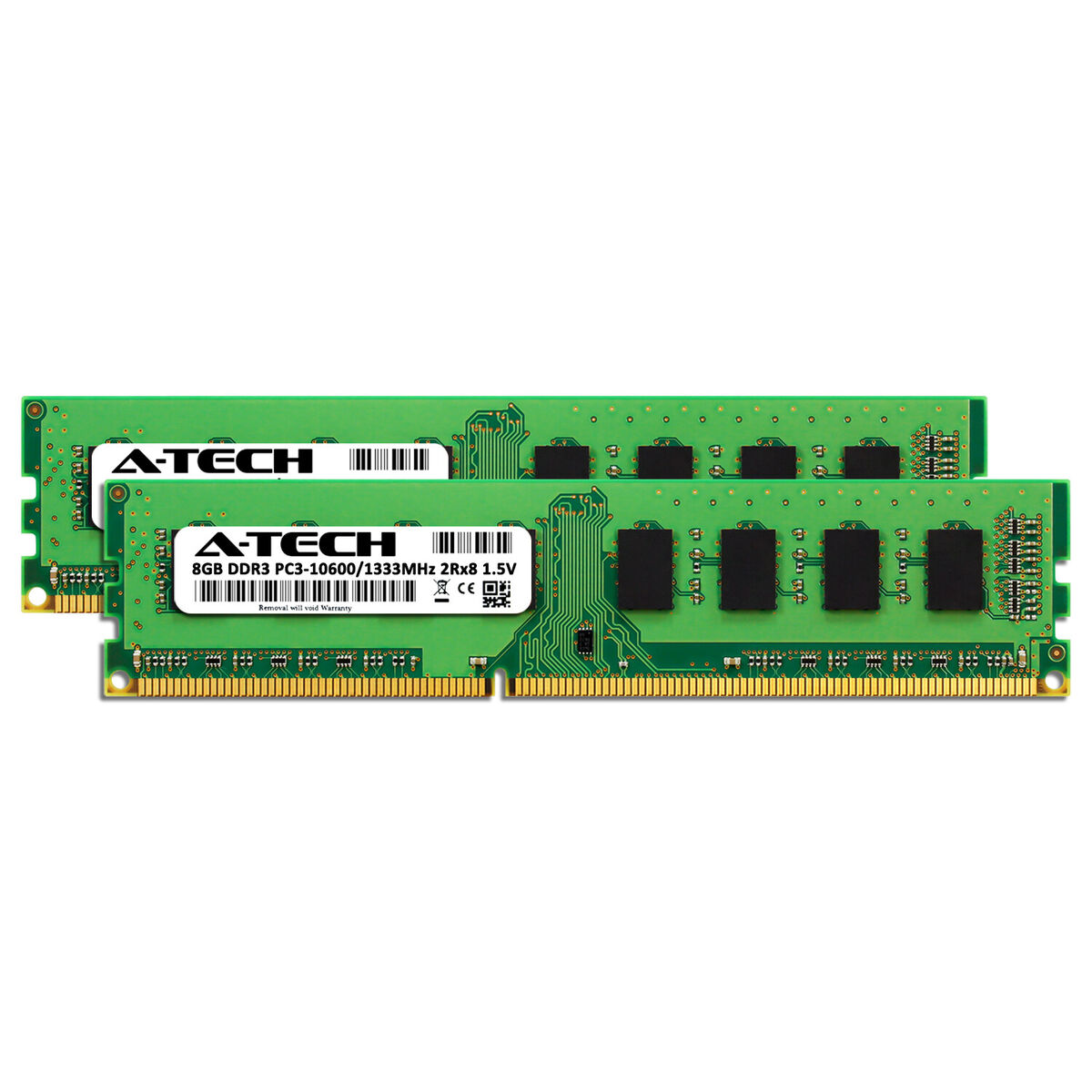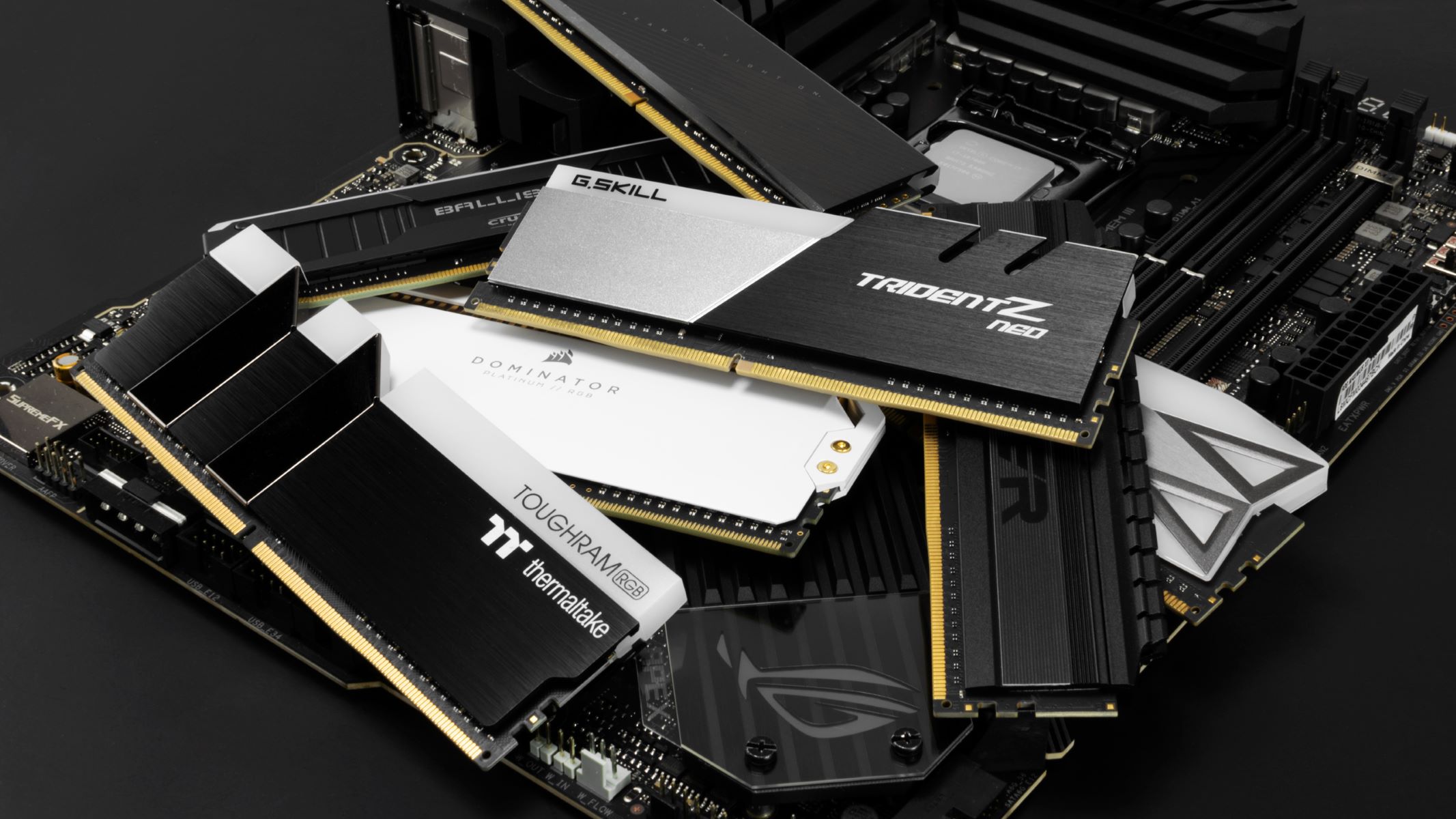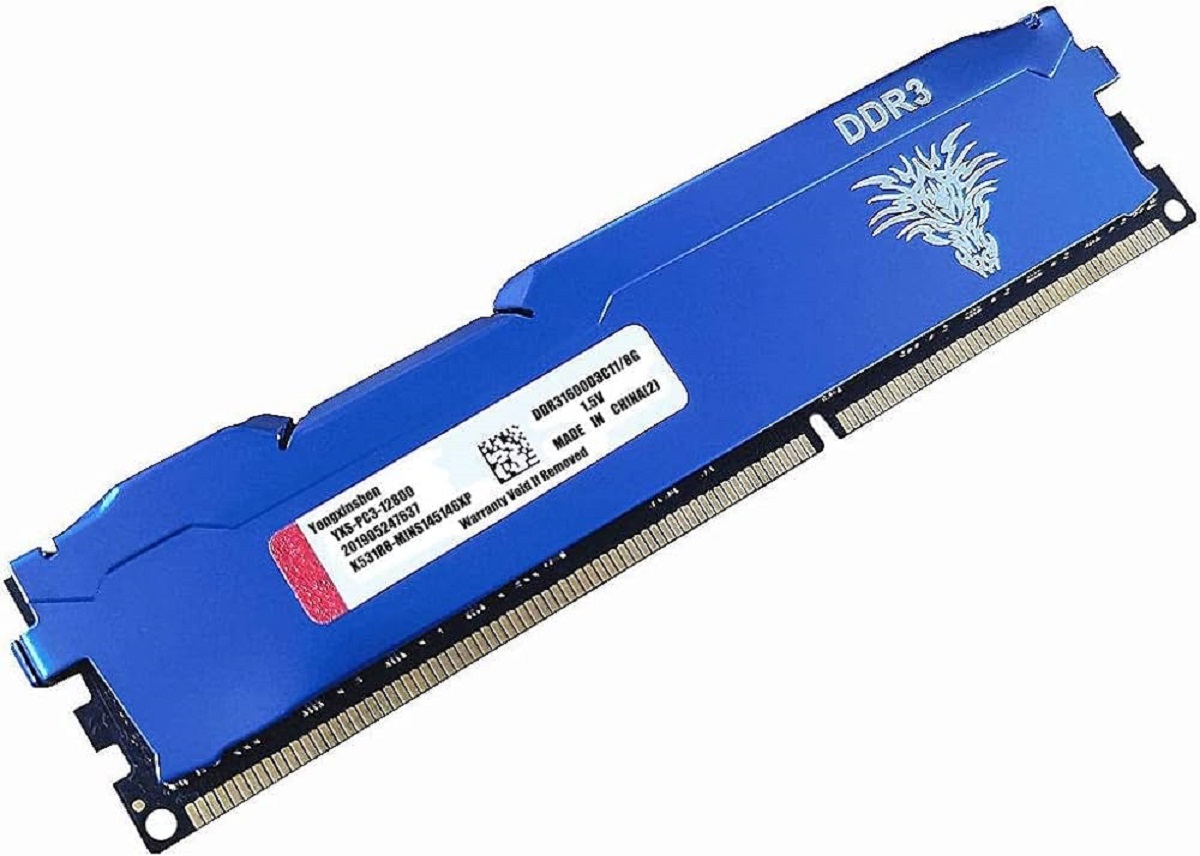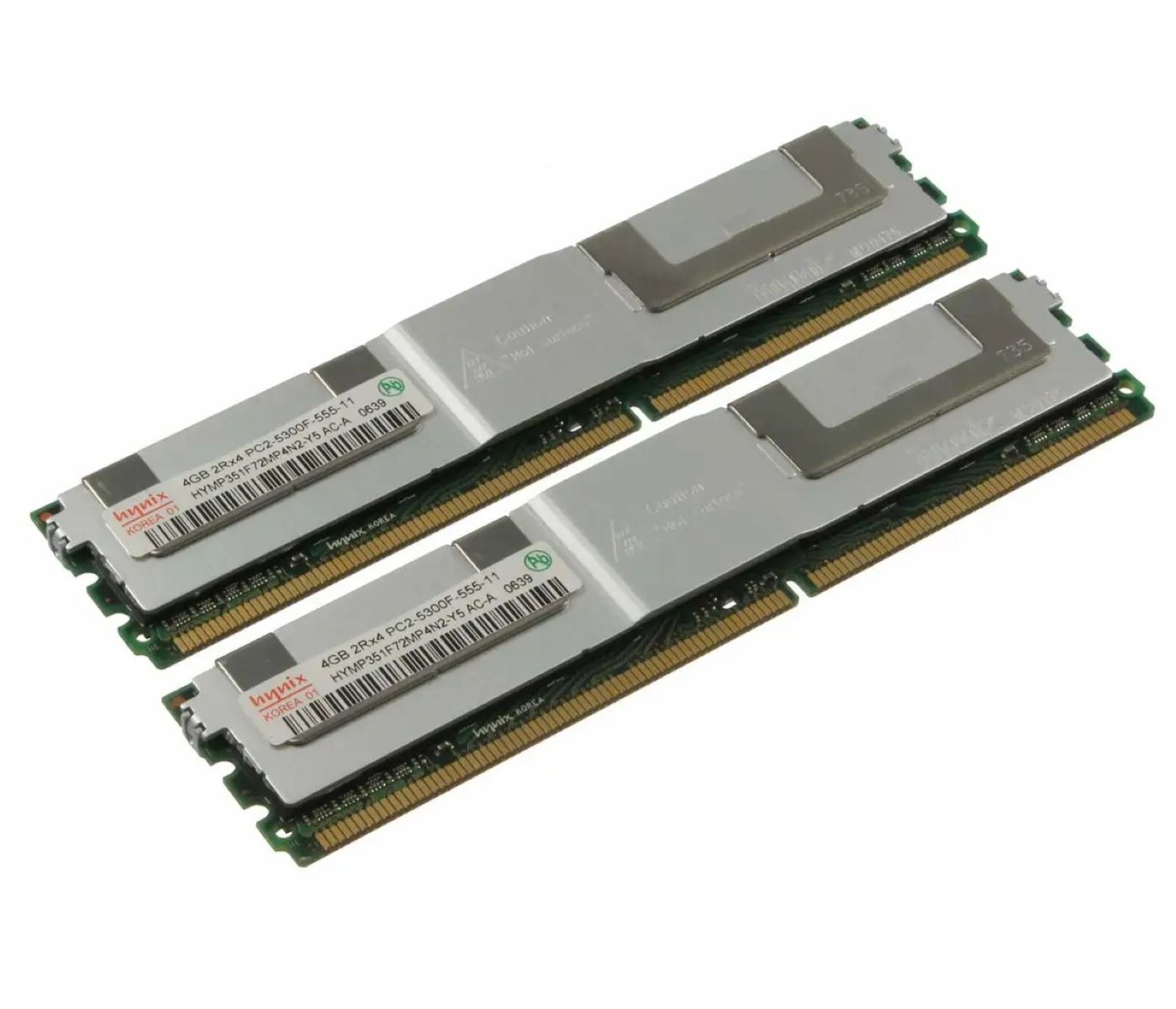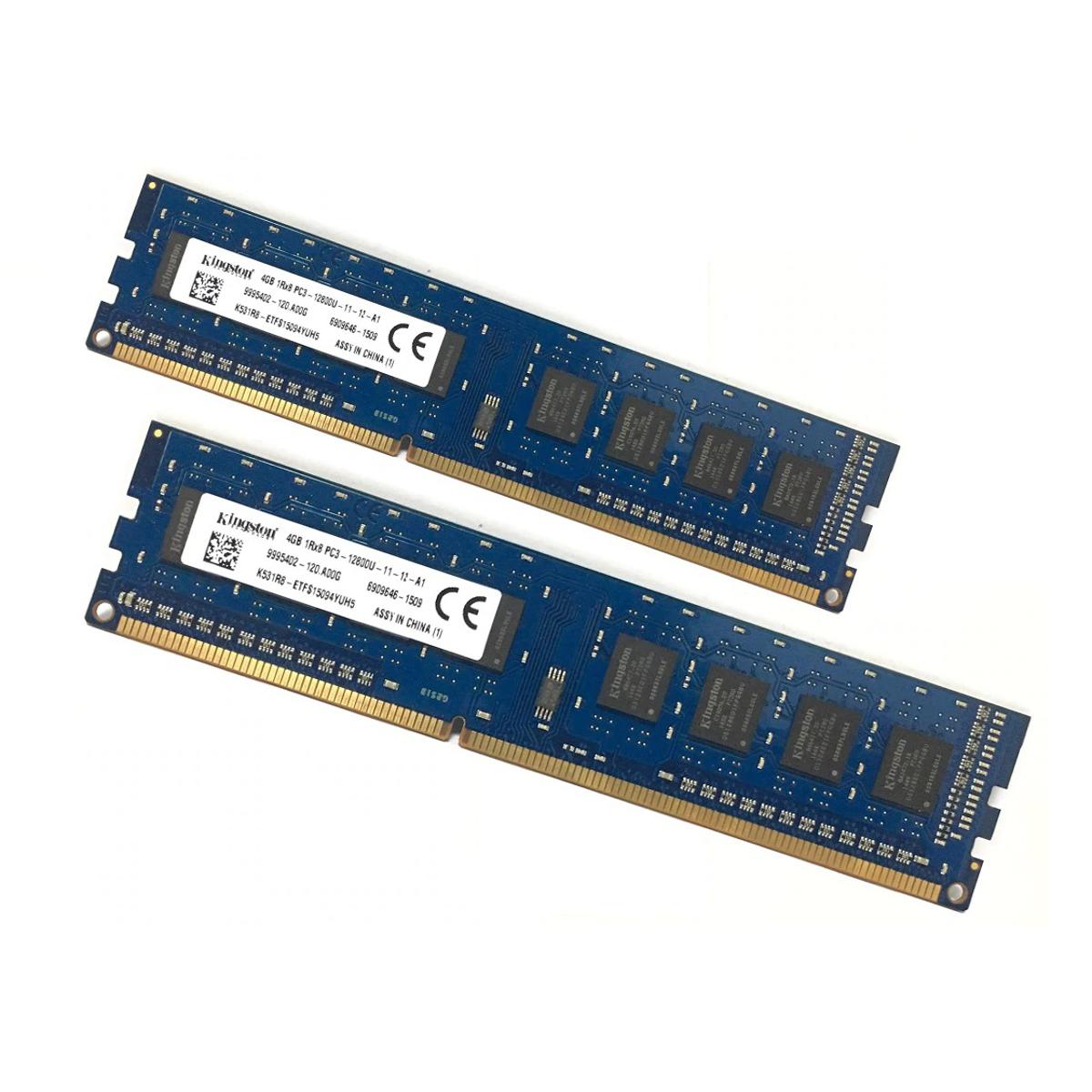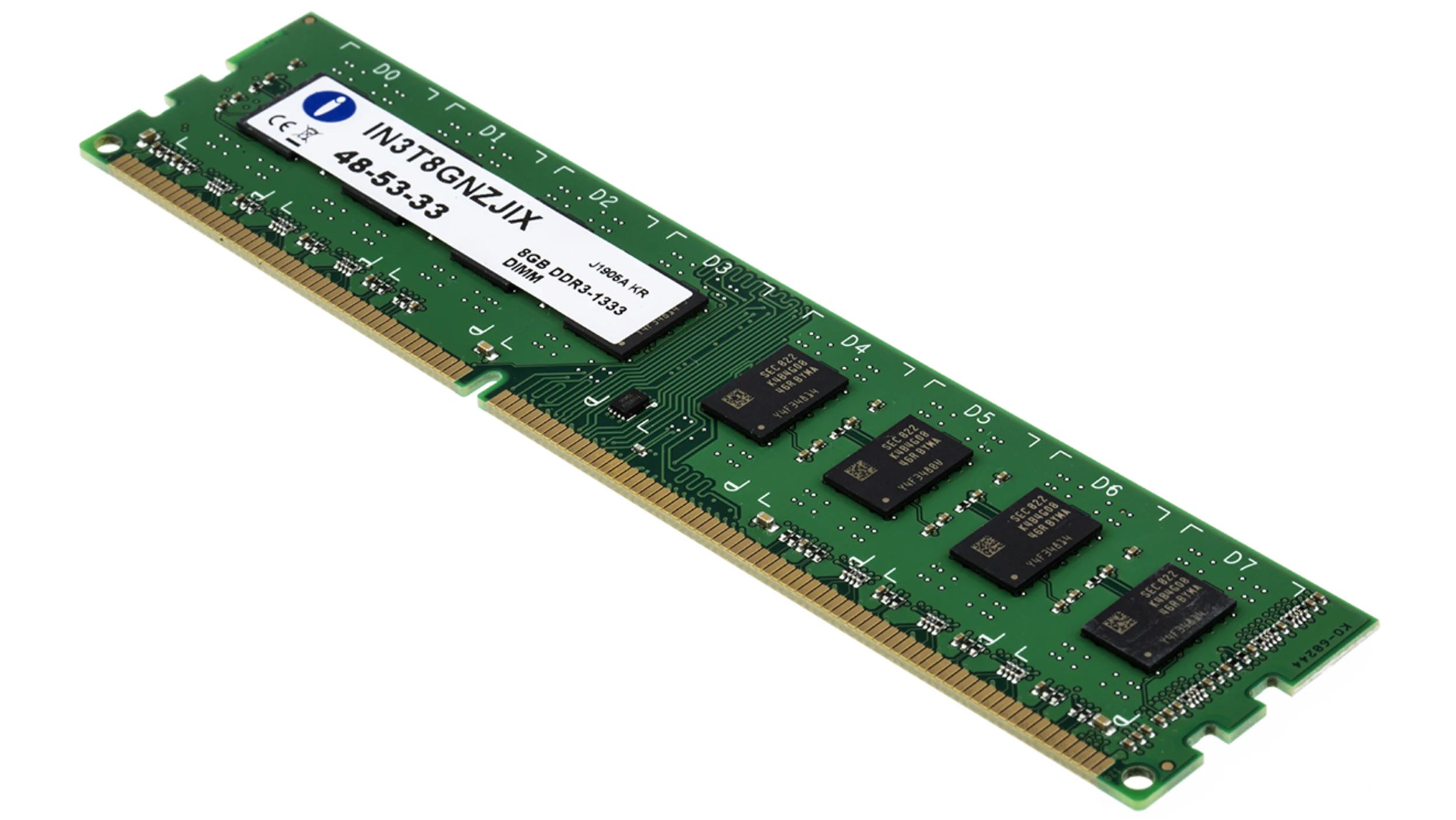Introduction
When it comes to the performance of your PC, one of the crucial components that plays a pivotal role is RAM, which stands for Random Access Memory. RAM serves as a temporary storage space that allows your computer to quickly access and manipulate data that is needed for various tasks and processes. Essentially, RAM serves as the working memory of your PC, enabling it to perform tasks efficiently and effectively.
In simpler terms, RAM acts as a bridge between your computer’s processor and its storage devices, such as the hard drive or solid-state drive (SSD). It holds the data and instructions that are actively being processed by the CPU, allowing for quick and seamless execution of tasks. Without sufficient RAM, your computer may struggle to multitask or handle resource-intensive applications, resulting in sluggish performance and decreased productivity.
Understanding the role of RAM is essential for anyone looking to optimize their computer’s performance or upgrade their system. In this article, we will delve into the functions of RAM, its importance in PC performance, different types of RAM available, factors to consider when buying RAM, and even touch on the concept of overclocking RAM. By the end, you will have a comprehensive understanding of what RAM does and how it impacts the overall performance of your PC.
Definition of RAM
RAM, or Random Access Memory, is a type of computer memory that provides temporary storage for the data and instructions that are actively being used by a computer’s processor. It allows for quick and random access to information, hence the name “random access memory”. Unlike storage devices such as hard drives or SSDs, which store data even when the computer is turned off, RAM is a volatile form of memory that requires continuous power to retain its data.
Think of RAM as a workspace for your computer. It holds the programs, files, and data that your computer needs to actively use in order to perform tasks. When you open an application or run a program, it gets loaded into the RAM, allowing the processor to quickly access and manipulate the necessary data for seamless operation.
The storage capacity of RAM is measured in gigabytes (GB) and determines how much data can be stored temporarily. Common RAM capacities range from 4GB to 32GB or more, with higher capacities usually offering better performance for resource-intensive tasks such as gaming, video editing, or running multiple applications simultaneously.
It’s important to note that RAM is not a permanent storage solution for your files and documents. Once the power is turned off or the computer is restarted, the data stored in RAM is cleared, and any unsaved work will be lost. This is in contrast to storage devices like hard drives or SSDs, which retain data even when the computer is powered off.
Overall, RAM serves as a critical component in a computer system, enabling efficient data access and manipulation for the processor. It plays a crucial role in determining the speed and performance of your PC and is an essential consideration when optimizing or upgrading your computer’s capabilities.
How RAM Works
To understand how RAM works, let’s break it down into a few key steps. When you power on your computer and start running programs, the operating system and necessary files are loaded from the storage device into the RAM. This initial loading process is known as booting up.
Once the programs are loaded into RAM, the central processing unit (CPU) can access the necessary data and instructions quickly. RAM is designed for high-speed data transfer, allowing the processor to retrieve and modify information rapidly. This speed is crucial for tasks that require real-time processing, such as opening applications, searching for files, or running complex calculations.
When you perform operations on your computer, such as opening a web browser or editing a document, the CPU fetches the required data and instructions from RAM. It then performs the necessary computations and updates the data in RAM as needed. This constant exchange between the CPU and RAM allows for seamless multitasking and efficient processing of tasks.
The ability of RAM to provide quick access to data is due to its physical design. RAM is composed of numerous memory cells, each of which can store an electrical charge representing a binary value (0 or 1). These memory cells are organized into rows and columns, forming a grid-like structure. The CPU uses an address bus to specify the location of the memory cell it wants to access, and a data bus to transfer data in and out of the memory cell.
RAM operates in synchronous mode, meaning it operates at a clock speed that synchronizes with the CPU. This synchronization ensures smooth communication and data transfer between the CPU and RAM. In addition, modern RAM modules often utilize dual-channel or quad-channel configurations, allowing for even faster data transfer rates and increased bandwidth.
It’s important to note that the amount of RAM in your computer can impact its performance. Insufficient RAM may result in slower application loading times, frequent freezing or lagging, and an overall decrease in system responsiveness. On the other hand, having ample RAM allows for smoother multitasking, faster data access, and improved overall performance.
RAM vs. Storage
RAM and storage are two essential components of a computer system, but they serve different purposes and have distinct characteristics. Understanding the differences between RAM and storage is crucial for optimizing your computer’s performance and knowing how to allocate your system resources effectively.
RAM, or Random Access Memory, as mentioned earlier, is a form of volatile memory that provides temporary storage for actively used data and instructions. RAM is a high-speed memory that allows the processor to quickly access and manipulate data, resulting in snappy and responsive performance. The capacity of RAM is typically measured in gigabytes (GB) and directly impacts the number of tasks your computer can handle simultaneously and the speed at which it can perform those tasks.
On the other hand, storage devices such as hard drives (HDD) and solid-state drives (SSD) provide non-volatile memory that retains data even when the computer is powered off. These storage devices have much larger storage capacities compared to RAM, often measured in terabytes (TB), and are used for long-term data storage, including operating systems, applications, files, and documents.
While both RAM and storage are crucial for overall system functionality, they have different roles. RAM acts as a temporary workspace for active data and instructions, allowing the CPU to quickly access and manipulate the information. This helps in executing tasks efficiently and enables seamless multitasking. In contrast, storage devices hold data for long-term storage and retrieval. They provide a means to store files and programs even when the computer is turned off and serve as a repository for data that is not currently being actively accessed by the CPU.
It’s important to note that the speed of accessing data from RAM is significantly faster compared to accessing data from storage. RAM’s high-speed nature allows for quick loading of applications, faster data transfers, and snappy system responsiveness. In contrast, accessing data from storage devices is comparatively slower, which is why it may take longer for applications to launch or files to load when they are stored on a hard drive or SSD.
To achieve optimal system performance, it is important to strike a balance between having enough RAM and ample storage capacity. Sufficient RAM allows for smooth multitasking and faster data access, while having enough storage ensures you can store all the necessary files and programs. Depending on your computing needs and budget, you may need to consider upgrading both RAM and storage to meet your requirements.
Importance of RAM in PC Performance
RAM plays a vital role in the overall performance and speed of your PC. It directly impacts how efficiently your computer can handle tasks, run applications, and multitask effectively. Understanding the importance of RAM can help you make informed decisions when upgrading or optimizing your system.
One of the key benefits of having sufficient RAM in your PC is improved multitasking capabilities. RAM allows your computer to juggle multiple tasks simultaneously without experiencing a significant slowdown. When you have more RAM available, your computer can easily switch between applications and keep them running smoothly in the background. This is especially valuable for individuals who frequently work with resource-intensive programs or run several applications simultaneously.
Having adequate RAM also enhances the overall responsiveness and speed of your computer. When your processor needs to access data or instructions, having the information readily available in RAM facilitates quick retrieval, resulting in faster execution times. This means that your applications will load faster, file operations will be expedited, and your overall computing experience will be snappier.
RAM is particularly important for tasks that demand significant memory resources, such as graphic design, video editing, gaming, and virtual machine usage. These activities require a substantial amount of data to be loaded into RAM for quick access and manipulation. Without enough RAM, your computer may struggle to process these resource-heavy applications, leading to slow performance, lag, or even crashes.
Moreover, insufficient RAM can have a negative impact on the stability and reliability of your system. When your computer exceeds its available RAM, it compensates by using virtual memory, which involves using the hard drive as an extension of RAM. However, accessing data from the hard drive is significantly slower than accessing data from RAM, resulting in a noticeable decrease in performance. This phenomenon, known as “paging” or “swapping”, can lead to system slowdowns, increased response times, and decreased overall productivity.
By investing in sufficient RAM, you can maximize the potential of your PC and ensure smooth and efficient performance. Consider your specific computing needs, the nature of the tasks you perform, and the applications you typically use when determining the amount of RAM required. Upgrading your RAM can be a cost-effective way to breathe new life into your computer and experience improved speed, responsiveness, and overall performance.
Types of RAM
There are several types of RAM available in the market, each with its own characteristics and compatibility. Understanding the different types of RAM can help you choose the right one for your computer system and ensure optimal performance.
1. DDR4 (Double Data Rate 4): DDR4 is the most common and widely used type of RAM in modern systems. It offers faster data transfer rates and improved power efficiency compared to its predecessor, DDR3. DDR4 RAM modules are readily available and compatible with a wide range of motherboards, making it a popular choice for both gaming and productivity-oriented PCs.
2. DDR3 (Double Data Rate 3): DDR3 RAM was the standard for many years before DDR4 became widely available. While DDR3 is slightly slower than DDR4, it is still capable of delivering excellent performance for most computing needs. DDR3 RAM modules are generally more affordable and can be a budget-friendly option for older systems or those that do not require the latest high-performance RAM.
3. DDR2 (Double Data Rate 2): DDR2 RAM was popular in earlier generations of computer systems. It offers slower data transfer rates compared to DDR3 and DDR4 but can still be found in older machines or legacy systems. DDR2 RAM is becoming less common and may be more challenging to find and upgrade.
4. DDR (Double Data Rate): DDR RAM is an older generation of RAM that is rarely used in modern systems. It has slower data transfer rates and lower capacities compared to DDR2, DDR3, and DDR4. DDR RAM is primarily found in very old computers or specialized applications where backward compatibility is required.
5. Laptop and Desktop RAM: RAM modules are designed specifically for either laptop or desktop computers. While the fundamental technology is the same, laptop RAM modules are physically smaller and have different form factors, such as SODIMM (Small Outline Dual Inline Memory Module), to fit into the compact space of laptops. Desktop RAM modules, on the other hand, use DIMM (Dual Inline Memory Module) form factor and are larger in size.
It’s important to note that RAM is not cross-compatible across different generations. For example, DDR4 RAM cannot be used in a motherboard that only supports DDR3. It’s essential to check your computer’s motherboard specifications to determine the type and generation of RAM it supports before making a purchase.
When buying RAM, consider the capacity, speed, and compatibility best suited for your computing needs. Higher capacity RAM modules allow for smoother multitasking and better performance in resource-intensive applications. Faster RAM delivers improved data transfer rates, resulting in quicker processing times. Additionally, verify the maximum amount of RAM your motherboard can support to avoid installing more RAM than your system can handle effectively.
Factors to Consider When Buying RAM
When it comes to buying RAM, there are several factors to consider to ensure that you choose the right modules that will enhance the performance of your computer. Here are some key factors to keep in mind:
1. Compatibility: Check your computer’s motherboard specifications to determine the type, generation, and maximum capacity of RAM it supports. Ensure that the RAM you select is compatible with your motherboard to avoid any compatibility issues.
2. Capacity: Determine your computing needs and the type of tasks you frequently perform. For basic web browsing, office work, and light multitasking, 8GB to 16GB of RAM is usually sufficient. However, if you engage in resource-intensive activities such as gaming, video editing, or running virtual machines, consider opting for 16GB or higher for smoother performance.
3. Speed: RAM speed, measured in megahertz (MHz), determines how quickly data can be transferred to and from the RAM module. Higher speeds result in faster processing times. When selecting RAM, consider the supported speed of your motherboard and aim for modules that are compatible with it.
4. Single or Dual Channel: Many motherboards support dual-channel memory configurations, which can provide a slight performance boost. If your motherboard supports dual-channel memory, consider getting RAM modules in pairs to take advantage of this feature.
5. Latency: Latency, measured in CL (CAS latency), refers to the delay between when the RAM receives a command and when it delivers the requested data. Lower latency generally results in faster performance, but the difference may be minimal in real-world scenarios. It’s worth considering if you prioritize maximum performance.
6. Brand and Quality: Choose reputable brands when buying RAM modules to ensure reliability, compatibility, and good technical support. Trusted brands often undergo rigorous quality testing and offer warranties for their products.
7. Budget: Set a budget for your RAM upgrades and consider the best balance between capacity, speed, and price. While higher capacity and faster speed RAM may offer better performance, they often come at a higher cost.
8. Future Upgradability: Consider the future expansion options of your system. If you anticipate needing more RAM in the future, ensure that there are available slots on your motherboard to accommodate additional modules.
By considering these factors, you can make an informed decision when buying RAM and choose the modules that will best suit your needs and improve your computer’s performance. Take the time to research and compare different options to find the right balance between performance, compatibility, and budget for your specific requirements.
Overclocking RAM
Overclocking RAM refers to the practice of running the RAM modules at speeds higher than their default specifications. By increasing the frequency and voltage of the RAM, users can potentially achieve higher data transfer rates, which can result in improved system performance. However, it’s essential to understand the benefits, risks, and precautions associated with overclocking RAM before attempting it.
One of the potential benefits of overclocking RAM is improved application and system responsiveness. Higher RAM speeds allow for faster data access and transfer, resulting in quicker program launches, smoother multitasking, and enhanced overall system performance. This can be particularly beneficial for resource-intensive tasks like gaming, video editing, and other demanding applications that require fast access to large amounts of data.
Before attempting to overclock RAM, it’s important to note that not all RAM modules are designed for overclocking. Some RAM modules have built-in XMP profiles (Extreme Memory Profiles) that allow for easy overclocking by selecting specific settings in the motherboard’s BIOS. These profiles are pre-configured and tested by the memory manufacturer to ensure stability and performance. However, even with XMP profiles, overclocking may still require manual adjustment of voltage and timing settings.
Overclocking RAM comes with certain risks, including instability and system crashes. When pushing the RAM beyond its default specifications, there is a higher chance of encountering errors, system freezes, and even data corruption. It’s crucial to perform thorough stability testing and stress testing after overclocking to ensure that the system remains stable under various workloads.
The thermal aspect should not be overlooked when overclocking RAM. Overclocking increases the heat generated by the RAM modules, and inadequate cooling can result in reduced stability and potential damage to the RAM. Ensure that your computer’s cooling system is sufficient to handle the increased heat load generated by overclocking.
When attempting to overclock RAM, it’s recommended to start with small increments and gradually increase the speed or voltage. This allows for a more controlled approach and helps in identifying the stability limits of the RAM modules. Keep in mind that the level of overclocking achievable may vary among different RAM modules and systems.
Lastly, be aware that overclocking RAM may void the warranty provided by the manufacturer. Before attempting any overclocking, verify the warranty terms and conditions to understand the implications it may have on your RAM’s warranty coverage.
Overall, overclocking RAM can provide noticeable performance gains for specific use cases, but it requires careful consideration, testing, and monitoring. If you are not comfortable with tinkering with hardware settings or if stability is crucial, it may be best to stick with the default specifications of your RAM modules. However, for users seeking to squeeze the maximum performance out of their systems, proper overclocking techniques can unlock additional performance headroom from their RAM modules.
Conclusion
RAM is a critical component in the smooth and efficient functioning of your computer. It acts as a temporary storage space that enables quick access to the data and instructions needed by the processor for seamless multitasking and efficient task execution. By understanding the role and importance of RAM, you can optimize your computer’s performance and ensure that it meets your computing needs.
In this article, we discussed the definition of RAM and how it works within a computer system. We also explored the differences between RAM and storage devices, highlighting their respective roles in the overall performance of a PC. Furthermore, we covered the importance of having sufficient RAM in improving system performance and responsiveness.
Additionally, we examined the different types of RAM available in the market, considering factors such as compatibility, capacity, speed, and latency. Understanding these factors is crucial when buying RAM to ensure that it is compatible with your computer system and meets your performance requirements.
We also touched upon the topic of overclocking RAM, discussing its potential benefits and risks. Overclocking RAM can provide increased performance, but it requires careful consideration, proper cooling, and thorough testing to ensure system stability.
In conclusion, RAM plays a vital role in the overall performance of your computer. By investing in sufficient and compatible RAM, you can enhance multitasking capabilities, improve application responsiveness, and ensure a smooth computing experience. Whether you are a casual user, a professional, or a gamer, optimizing your RAM configuration can significantly impact the speed and efficiency of your computer system.







